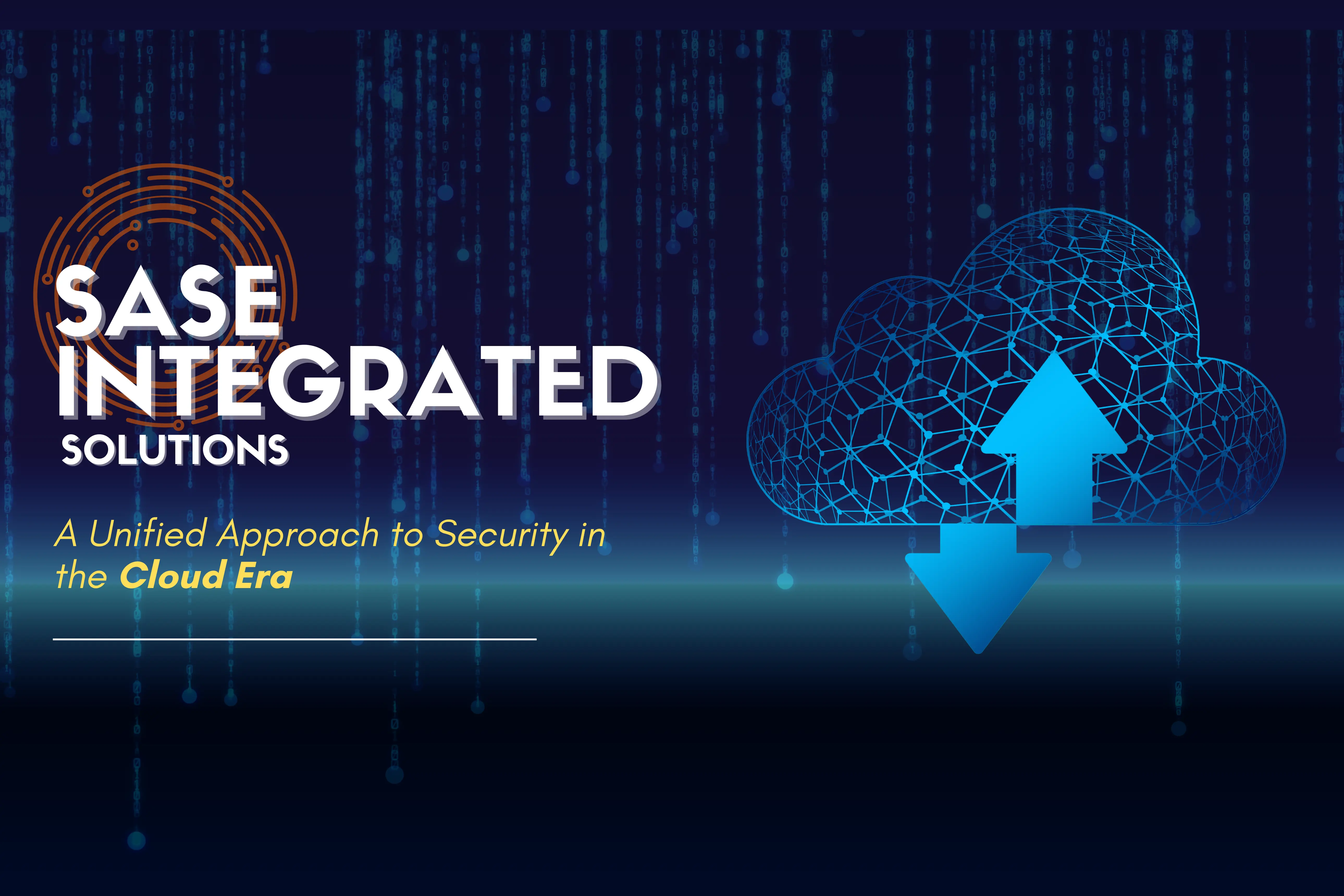
SASE Integrated Solutions: A Unified Approach to Security in the Cloud Era
SASE converges networking and security functions into a cloud-delivered service, offering consistent policy enforcement and threat protection for users, devices, and applications – regardless of location. The exponential growth of cloud adoption is projected to reach$678.8 billion by 2024and has fundamentally altered the security landscape. As organizations prioritize a holistic security posture, integrated SASE solutions are emerging as a powerful tool to simplify management, enhance protection, and empower a secure digital transformation journey.
The benefits of SASE Integrated solutions are significant, and we'll delve deeper into them in the following sections. Stay tuned to explore how integrated SASE solutions can revolutionize your organization's cloud security posture
Challenges of Traditional Security vs. The Power of SASE Integration
| Feature | Traditional Security | SASE Integration |
|---|---|---|
| Security Model | Perimeter-based, focused on securing a defined network edge. | Zero trust, focus on continuous verification regardless of location. |
| Scalability | Difficult and expensive to scale with cloud adoption and remote work | Cloud-based, easily scales to accommodate changing needs. |
| User-Centric Security | Often lacks focus on individual user identity and access control. | Enforces granular access control based on user, device, and application. |
| Network and Security Integration | Function in silos, requiring complex management. | Unified platform, simplifies management and streamlines security policies. |
| Visibility and Control | Limited visibility into remote access and cloud traffic. | Provides centralized visibility and control across the entire network. |
| Performance | Backhauling traffic to a central location can lead to latency. | Edge based security processing minimizes latency and improves user experience. |
| Cost | Requires upfront investment in hardware and software. | Subscription-based model, reduces upfront costs and simplifies budgeting. |
Key Benefits of SASE Integrated Solutions
The benefits of SASE Integrated Solutions can be categorized into three key areas: enhanced security, improved user experience, and simplified management with reduced costs.
Enhanced Security
SASE adopts a Zero Trust security model, which assumes no inherent trust within the network. Every user and device must be continuously authenticated and authorized before accessing resources. This significantly reduces the attack surface and potential damage from breaches.
SASE integrates a variety of security tools, including firewalls, intrusion detection/prevention systems (IDS/IPS), and malware protection, across all access points. This provides comprehensive security for users, devices, and applications, regardless of location.
SASE solutions often include data encryption at rest and in transit, threat detection and prevention using advanced analytics and sandboxing for suspicious files. These features further bolster the security posture of an organization.
Improved User Experience
SASE facilitates secure remote access to cloud applications from any device, location, or network. This allows employees to work productively from anywhere, improving flexibility and overall satisfaction.
SASE often integrates with SD-WAN (Software- Defined Wide Area Network) technology. SD-WAN optimizes network traffic routing, ensuring a smooth user experience for geographically dispersed users accessing cloud resources.
SASE solutions can integrate with Single Sign-On (SSO) tools, allowing users to access all authorized applications with a single login. This simplifies access and improves user productivity.
Simplified Management and Reduced Costs
SASE replaces the need for multiple-point security products, consolidating them into a single, cloud-based platform. This reduces management complexity and frees up IT resources.
The cloud-based nature of SASE simplifies deployment, maintenance, and updates. Automatic updates ensure consistent security posture without requiring manual intervention by IT staff.
By consolidating tools and automating tasks, SASE can lead to significant cost savings. Reduced IT overhead and streamlined operations free up resources for more strategic initiatives.
Additional Considerations
Beyond core features, selecting a Secure Access Service Edge (SASE) solution requires careful evaluation. Here's what to consider:
NIPS operates at the network level, monitoring incoming and outgoing traffic to detect and prevent suspicious activity. It inspects packets, identifies threats, and can block malicious traffic in real-time, protecting the entire network infrastructure.
Ensure the solution aligns with your needs. Look for functionalities like Cloud Access Security Broker (CASB), Secure Web Gateway (SWG), and Zero-Trust Network Access (ZTNA).
Verify the solution meets your industry's data security and privacy regulations.
Don't overlook Proof-of-Concept (POC) trials. POCs allow you to test the SASE solution in your environment and ensure it effectively addresses your specific requirements.
Conclusion
Secure Access Service Edge (SASE) integrated solutions offer a transformative approach to cloud security. With enhanced security through Zero Trust Enforcement and Integrated Threat Protection, improved user experience via secure remote access and optimized network performance, and simplified management reducing costs, SASE is the future of enterprise security. As businesses evolve, SASE will play a crucial role in safeguarding their digital assets.Contact ustoday to embark on your journey towards a more secure, efficient, and resilient cloud infrastructure with SASE-integrated solutions.
